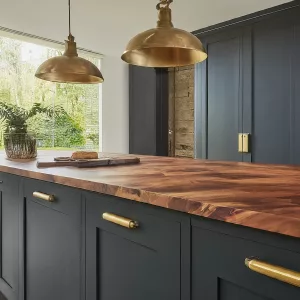I. Wooden Worktops Introduction
Wooden worktops have long held a cherished place in home kitchens, revered for their aesthetic appeal and the rustic charm they impart to the heart of the house. From classic oak to peculiar bamboo, these surfaces have adorned countless countertops, contributing to a cozy and inviting ambiance. Yet, beneath their timeless allure lies a contentious debate regarding their practicality and long-term viability in modern kitchen design.
Get a quote with free samples and free template now for quartz, granite, marble and more on Marmoris
While wooden worktops continue to enchant homeowners with their natural beauty, an increasing number of experts and designers advocate for a cautious approach when considering them for kitchen installations. This article delves into the prevalent argument against wooden worktops, shedding light on the factors that challenge their suitability in today’s culinary spaces. By examining these considerations, homeowners can make informed decisions about whether wooden worktops align with their lifestyle and practical needs.
II. Vulnerability to Moisture and Heat
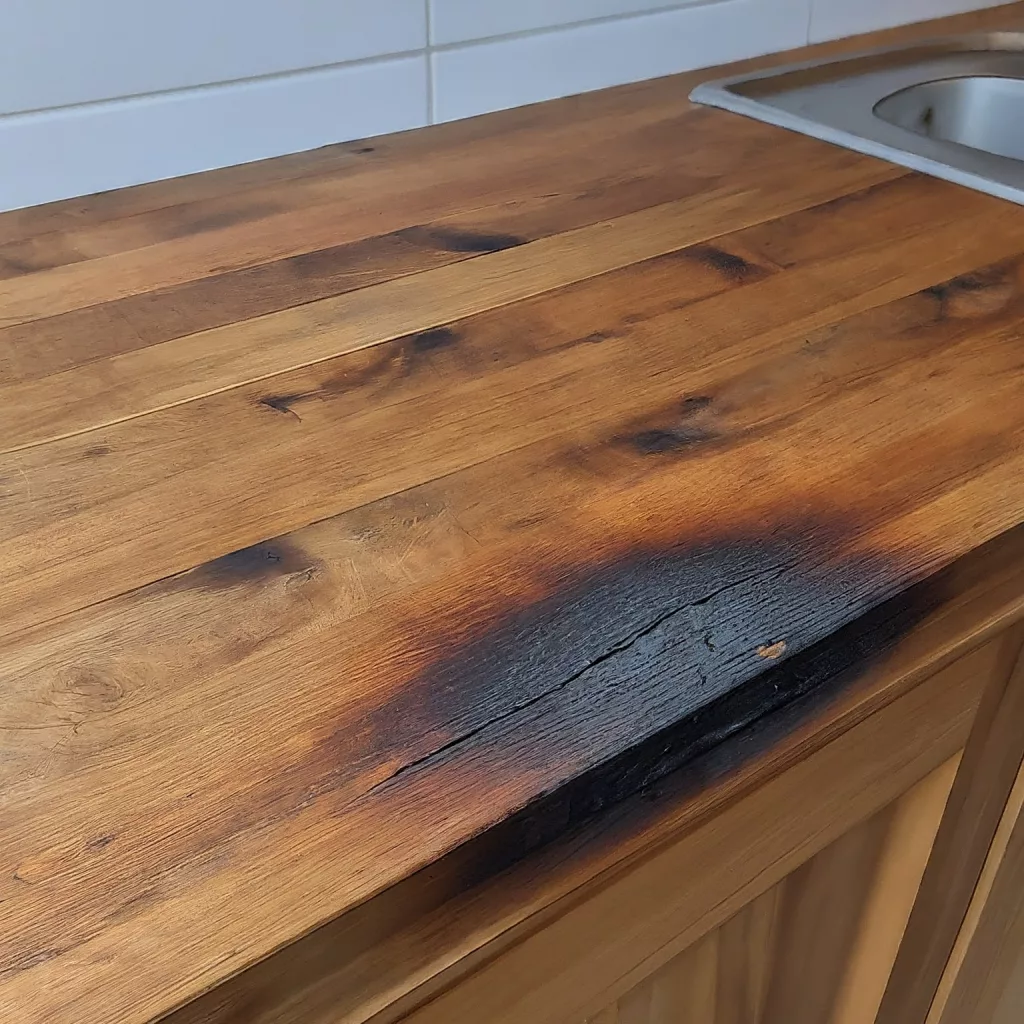
Wood, while undeniably beautiful, is inherently susceptible to the effects of moisture and heat. Unlike synthetic materials or metals, wood possesses organic properties that make it particularly prone to damage when exposed to these elements.
Exposure to moisture presents a significant challenge for wooden worktops. Despite efforts to seal and protect the surface, wood can still absorb water over time. This absorption can lead to warping, swelling, and ultimately, structural damage. Even minor spills or prolonged exposure to steam from cooking can compromise the integrity of wooden worktops, causing them to warp and lose their smooth, level surface.
Furthermore, the combination of heat and wood can be a recipe for disaster in the kitchen. Placing hot pans directly onto wooden worktops risks leaving burn marks or scorching the surface. Moreover, accidental spills of hot liquids can cause irreparable damage, leaving unsightly stains or even charring the wood.
In light of these vulnerabilities, homeowners must carefully consider the practical implications of installing wooden worktops in their kitchens. While the allure of natural wood may be undeniable, the risks associated with moisture and heat exposure cannot be ignored. Alternatives that offer greater durability and resilience may prove to be more suitable choices for long-term functionality and peace of mind in the kitchen.
III. Wooden Worktops Hygiene Concerns
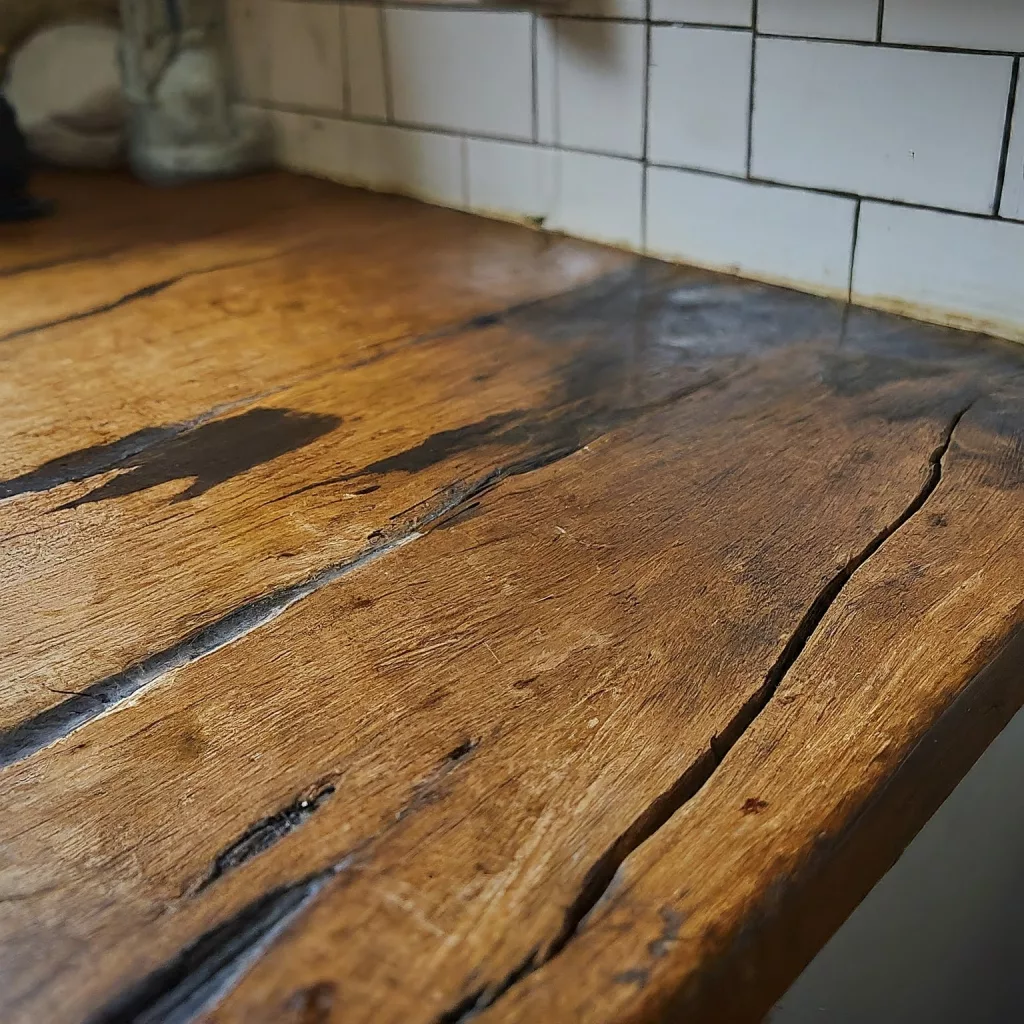
While wooden worktops exude a charming warmth, their porous nature raises valid concerns regarding hygiene. Unlike non-porous materials such as quartz or granite, wood can harbor bacteria within its grains, even with diligent cleaning practices.
Get a quote with free samples and free template now for quartz, granite, marble and more on Marmoris
Wood’s natural porosity provides an ideal environment for bacteria to thrive, as moisture and food particles can seep into its surface, creating breeding grounds for microbial growth. Despite regular cleaning efforts, including wiping down with disinfectants, it’s challenging to penetrate deep into the wood’s pores to eliminate all traces of bacteria effectively.
In contrast, non-porous materials like quartz or granite offer a smoother, impervious surface that is inherently more hygienic. These materials do not absorb moisture or harbor bacteria in the same way as wood, making them easier to clean and maintain sanitary conditions in the kitchen.
For households where food safety and cleanliness are paramount, opting for non-porous worktop materials may offer greater peace of mind. While wooden worktops undoubtedly possess a certain aesthetic appeal, the potential hygiene risks associated with their porous nature should not be overlooked. Considering the importance of maintaining a sanitary kitchen environment, homeowners may find that non-porous alternatives better align with their priorities for cleanliness and hygiene in food preparation areas.
IV. Maintenance Demands
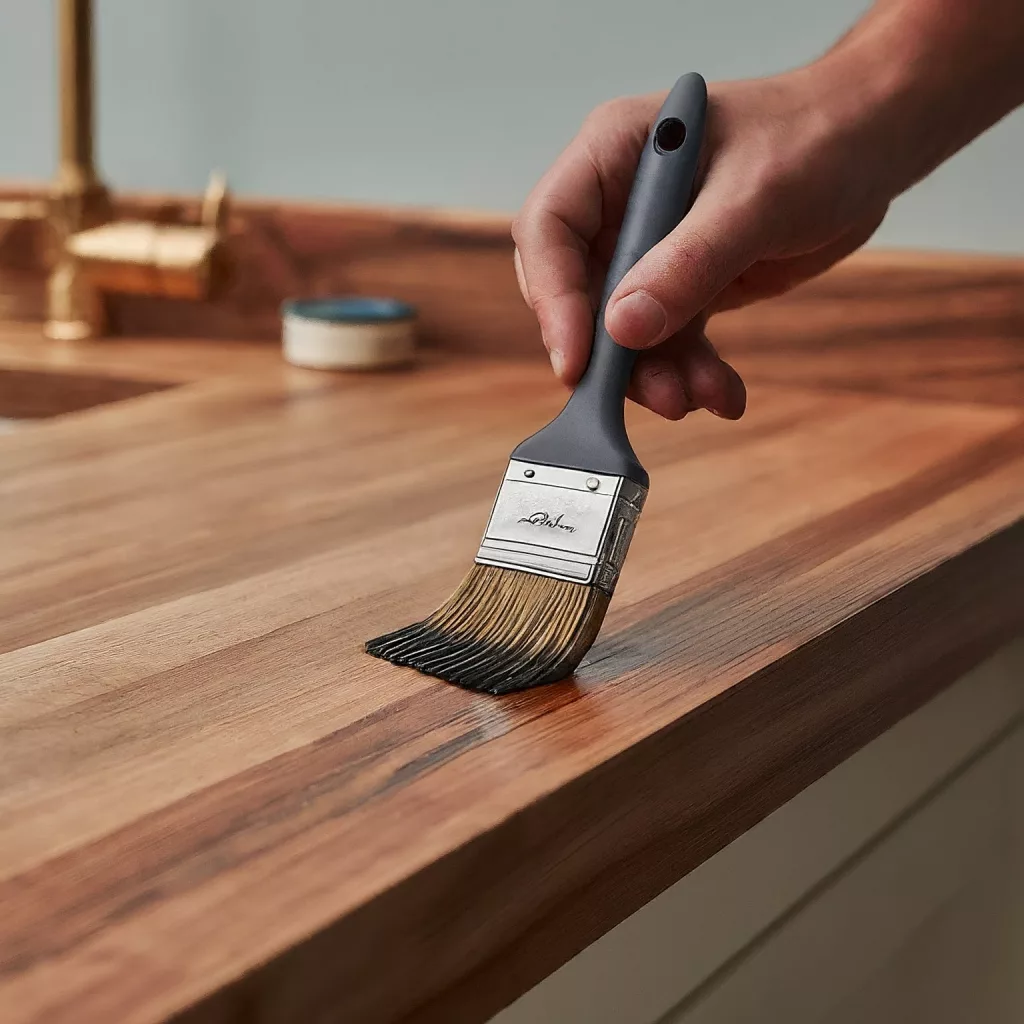
Beyond their aesthetic allure, wooden worktops demand a considerable investment of time and effort in maintenance to preserve their appearance and structural integrity over time. Unlike low-maintenance alternatives such as laminate or stainless steel, wooden worktops require regular sealing and oiling to mitigate the effects of moisture, heat, and wear.
To maintain their luster and durability, wooden worktops must be sealed with protective coatings to create a barrier against moisture penetration. Without adequate sealing, the wood becomes susceptible to warping, staining, and deterioration, necessitating costly repairs or even replacement.
In addition to sealing, wooden worktops require periodic oiling to nourish the wood and restore its natural beauty. Oiling helps to replenish the moisture lost through exposure to the kitchen environment, preventing the wood from drying out and becoming brittle. Failure to oil wooden worktops regularly can result in cracking, splitting, and other signs of wear, detracting from their visual appeal and longevity.
In contrast, low-maintenance alternatives like laminate or stainless steel offer a hassle-free solution for homeowners seeking durable and easy-to-care-for worktop surfaces. These materials are resistant to moisture, heat, and stains, requiring minimal upkeep to maintain their appearance and functionality. With laminate, occasional cleaning with soap and water is typically all that’s needed, while stainless steel can be wiped down with a damp cloth to keep it looking pristine.
For homeowners with busy lifestyles or limited time for upkeep, the high maintenance demands of wooden worktops may prove to be a significant drawback. By opting for low-maintenance alternatives, they can enjoy the beauty of a stylish kitchen without the ongoing maintenance requirements that come with wooden surfaces.
Get a quote with free samples and free template now for quartz, granite, marble and more on Marmoris
V. Durability and Longevity
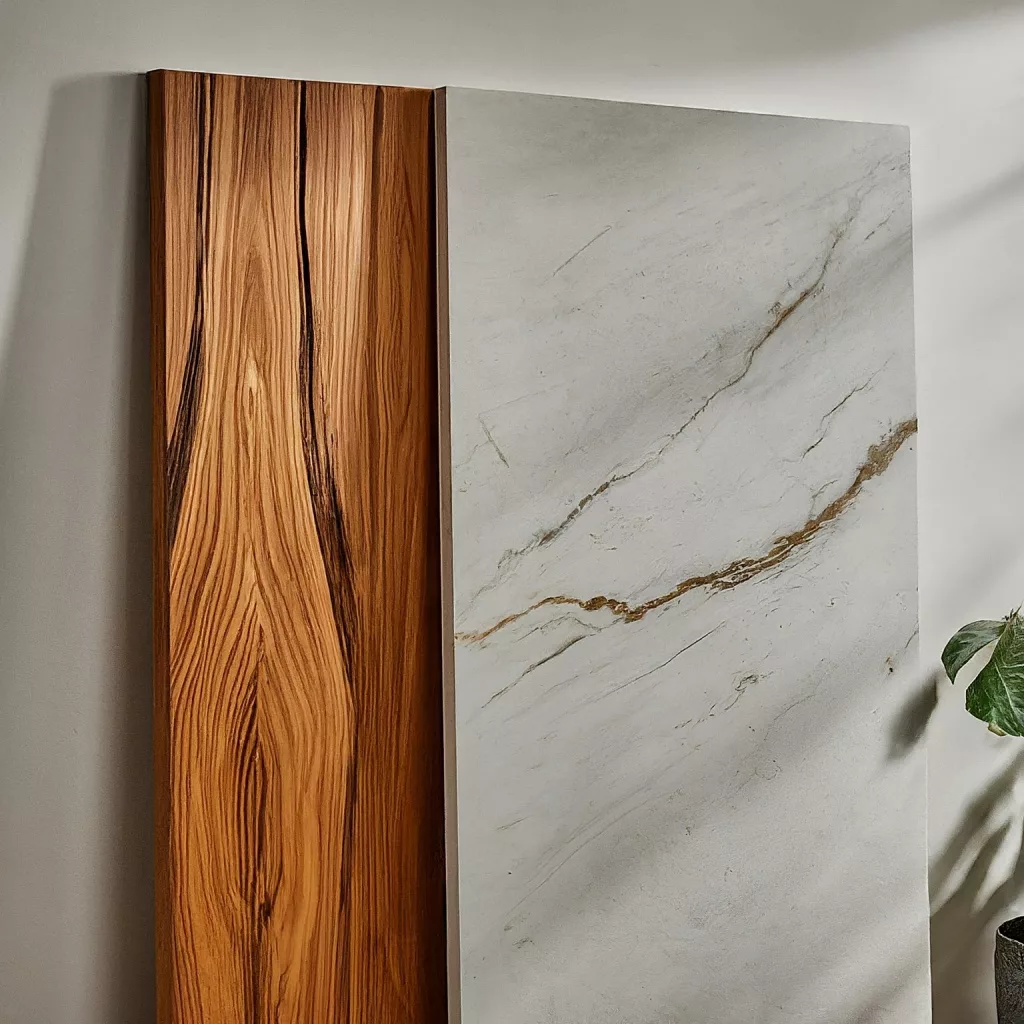
When considering worktop materials for the kitchen, durability and longevity are key factors that weigh heavily on the decision-making process. While wooden worktops exude charm and character, they often fall short in terms of durability compared to other materials.
Wood, by its very nature, is more susceptible to scratches, dents, and general wear and tear than materials like quartz, granite, or stainless steel. Despite efforts to protect the surface with sealants and coatings, wooden worktops are prone to showing signs of usage over time, including knife marks, scuffs, and indentation from heavy objects.
This inherent vulnerability to damage translates into a shorter lifespan for wooden worktops compared to their more resilient counterparts. While some homeowners may appreciate the patina that develops with age, others may find themselves faced with the prospect of frequent repairs or even replacement to maintain the appearance and functionality of their kitchen surfaces.
The cost implications of such maintenance cannot be overlooked. Frequent repairs or replacements of wooden worktops can quickly add up, significantly impacting the overall expense of kitchen upkeep. In contrast, materials like quartz, granite, or stainless steel offer greater durability and longevity, requiring minimal maintenance and fewer repairs over the years.
For homeowners seeking worktops that can withstand the rigors of daily use and maintain their aesthetic appeal for years to come, investing in durable materials may prove to be a more prudent choice in the long run. While wooden worktops undoubtedly possess a timeless charm, their susceptibility to damage and the associated costs of upkeep may outweigh their aesthetic appeal for many discerning homeowners.
Get a quote with free samples and free template now for quartz, granite, marble and more on Marmoris
VI. Environmental Impact
In an era marked by growing environmental consciousness, the choice of materials for kitchen worktops carries significant implications for sustainability and conservation efforts. Wooden worktops, while celebrated for their natural beauty, raise valid concerns regarding their environmental impact, particularly in relation to deforestation and wood sourcing practices.
One of the primary environmental considerations associated with wooden worktops is the depletion of forests and the loss of biodiversity that accompanies deforestation. As demand for wood products continues to rise, forests worldwide face increasing pressure, leading to habitat destruction, soil erosion, and disruption of ecosystems. Moreover, the carbon footprint associated with logging, transportation, and processing of wood further contributes to environmental degradation and climate change.
To mitigate these concerns, homeowners are encouraged to seek out eco-friendly alternatives to traditional wooden worktops. Recycled materials, such as composite wood or reclaimed timber, offer a sustainable option that reduces the need for virgin wood extraction and minimizes waste. Additionally, certifications such as the Forest Stewardship Council (FSC) ensure that wood products come from responsibly managed forests, promoting conservation and sustainable forestry practices.
Furthermore, advancements in technology have paved the way for innovative alternatives to traditional wood, such as bamboo or cork. These materials offer comparable aesthetics to hardwoods while boasting faster growth rates and higher renewability, making them environmentally preferable options for conscientious consumers.
By choosing eco-friendly alternatives to wooden worktops, homeowners can minimize their environmental footprint and contribute to the preservation of natural resources. While wooden worktops may hold timeless appeal, embracing sustainable materials aligns with the principles of environmental stewardship and promotes a more sustainable future for generations to come.
Get a quote with free samples and free template now for quartz, granite, marble and more on Marmoris
VII. Aesthetics vs. Practicality
The allure of wooden worktops lies in their timeless beauty and undeniable charm, which add a touch of warmth and sophistication to any kitchen space. The rich grain patterns, natural variations in color, and tactile appeal of wood evoke a sense of craftsmanship and authenticity that is difficult to replicate with synthetic materials.
However, the aesthetic appeal of wooden worktops must be carefully balanced with practical considerations, such as maintenance and durability. While wood exudes an inviting ambiance, it also requires regular upkeep to preserve its appearance and structural integrity. From sealing and oiling to guarding against moisture and heat damage, maintaining wooden worktops demands a significant investment of time and effort.
Moreover, wooden worktops are inherently more susceptible to scratches, dents, and wear and tear compared to alternatives like quartz, granite, or stainless steel. While some homeowners may be willing to accept these imperfections as part of the natural aging process, others may find themselves grappling with the inconvenience and expense of frequent repairs or replacements.
In navigating the tension between aesthetics and practicality, it’s essential for homeowners to make informed decisions based on their unique priorities and lifestyle preferences. While wooden worktops undoubtedly offer unparalleled beauty and character, they may not be the most practical choice for households with busy schedules or high-traffic kitchens.
Homeowners seeking to design their kitchens should carefully weigh factors like maintenance, durability, and environmental impact alongside aesthetics. Whether choosing traditional wooden worktops or alternative materials, informed decisions balancing visual appeal and practicality are crucial. Achieving this balance allows homeowners to create kitchens that are both visually stunning and highly functional over the long term.
Get a quote with free samples and free template now for quartz, granite, marble and more on Marmoris
VIII. Wooden Worktops Conclusion
In conclusion, the decision to install wooden worktops in the kitchen should be approached with careful consideration of the practical implications and long-term sustainability. While wooden worktops undoubtedly offer timeless beauty and charm, they come with a host of challenges that warrant thoughtful deliberation.
Throughout this discussion, we have explored several key arguments against wooden worktops, including their vulnerability to moisture and heat, hygiene concerns, high maintenance demands, limited durability, and environmental impact. From warping and bacterial growth to frequent upkeep and the depletion of forests, these factors underscore the importance of weighing the pros and cons before committing to wooden worktops.
Therefore, I encourage readers to thoroughly evaluate their priorities and explore alternative options that may better align with their lifestyle, budget, and values. Whether considering low-maintenance materials like laminate or eco-friendly alternatives such as recycled or sustainable wood, there are myriad choices available that offer both aesthetic appeal and practical functionality.
Above all, it is crucial to strike a balance between aesthetics and practicality, ensuring that the chosen worktop material not only enhances the visual appeal of the kitchen but also withstands the rigors of daily use and contributes to long-term sustainability. By making informed decisions and considering the broader implications of their choices, homeowners can create a kitchen space that not only delights the senses but also reflects their commitment to responsible living and environmental stewardship.
Get a quote with free samples and free template now for quartz, granite, marble and more on Marmoris
